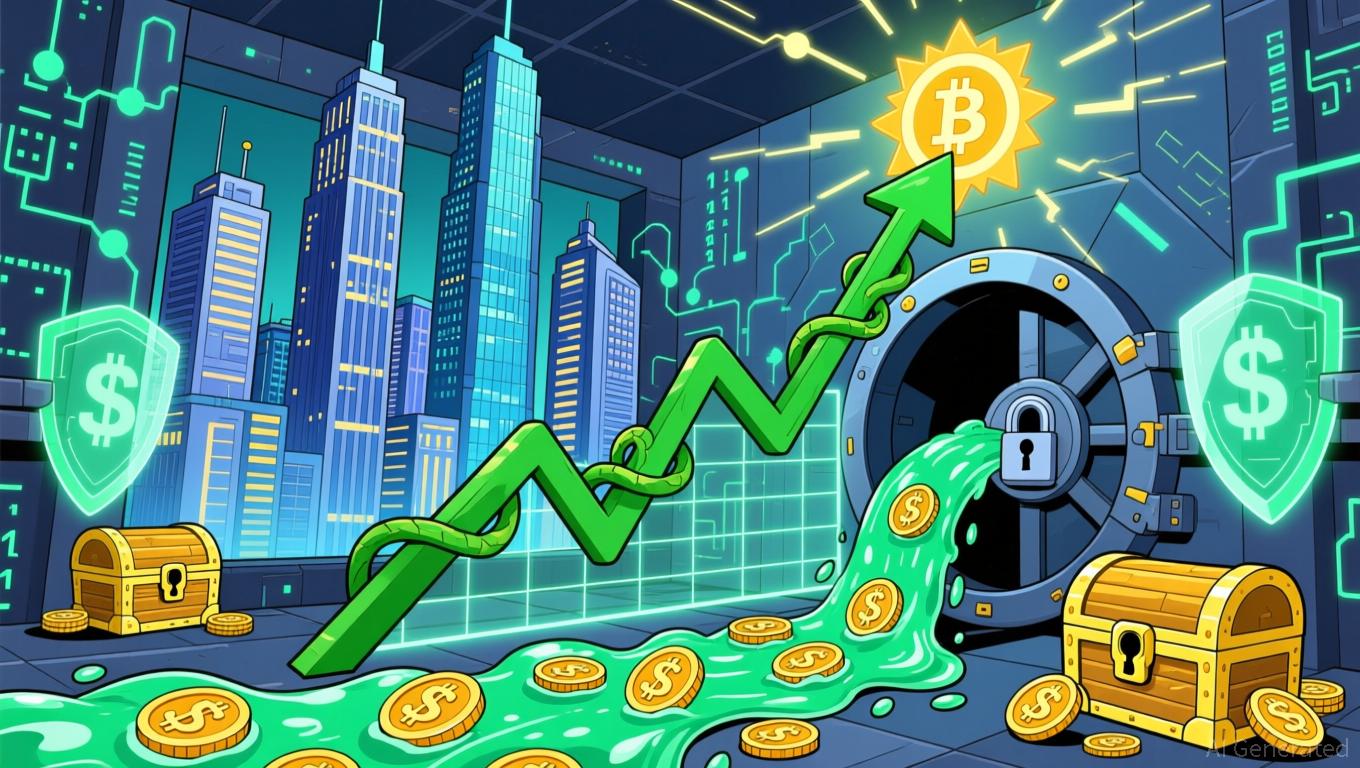India’s Cryptocurrency Conundrum: Can Updated VDA Regulations Safeguard Progress or Hinder Expansion?
- India's VDA regulatory review aims to align crypto rules with global standards, addressing consumer protection gaps and market integrity risks. - Current fragmented regulations, including 30% profit tax and weak custody laws, have driven users to offshore platforms, stifling local innovation. - Proposed reforms include risk-based token classification, licensing for exchanges, and RWA frameworks to balance innovation with systemic risk mitigation. - A balanced approach could attract investment and strengt
India is currently reassessing its approach to virtual digital assets (VDAs), a move that could transform the nation’s cryptocurrency environment by bringing it closer to international norms and addressing persistent issues around consumer safety and market reliability. Despite the absence of a robust legal structure, India remains a vital market for crypto, boasting over 100 million users—many of whom are young and technologically adept. The Central Board of Direct Taxes is leading this review, prompted in part by the Supreme Court’s directive in May 2025 for more explicit regulations,
At present, India’s VDA rules are piecemeal, concentrating mainly on steep taxation and basic anti-money laundering (AML) protocols. The imposition of a 30% tax on crypto earnings, along with a 1% tax deducted at source (TDS), has driven many participants to unregulated foreign exchanges, hindering domestic growth. While the Financial Intelligence Unit-India (FIU-IND) enforces AML and KYC standards for both local and international providers, there is no comprehensive legislation covering asset custody, bankruptcy, or market practices.
The ongoing review, shaped by India’s leadership of the G20 in 2023 and recommendations from global financial authorities, is focusing on several crucial aspects. Protecting investors is a primary concern, with suggestions for standardized rules on asset custody, insolvency, and mandatory transparency. Measures to ensure market integrity may involve licensing for exchanges, custodians, and wallet operators, as well as tighter controls on leverage and liquidity. There is also discussion of a dedicated regulatory approach for tokenized real-world assets (RWAs),

The proposed reforms include a risk-based categorization for VDAs—such as payment, utility, and asset-backed tokens—each governed by specific regulatory measures. Licensing requirements could obligate service providers to adhere to standards for capital, cybersecurity, and governance, while conduct rules may enforce uniform risk disclosures and asset separation.
A comprehensive VDA regulatory system could offer substantial advantages. By clarifying legal responsibilities and improving transparency, it could help prevent financial crimes and attract both domestic and international investment. Enhanced data and reporting obligations, including real-time transaction tracking, would allow agencies like the Reserve Bank of India and the Securities and Exchange Board of India to collaborate more efficiently. Furthermore, reducing dependence on overseas platforms could nurture local expertise and creativity,
The effectiveness of this regulatory overhaul will depend on finding the right balance between strict oversight and adaptability. Some caution that excessive regulation could hinder progress, while insufficient enforcement may leave systemic vulnerabilities unaddressed. Nonetheless, many believe that a balanced strategy—one that incorporates global best practices while reflecting India’s unique market conditions—
Disclaimer: The content of this article solely reflects the author's opinion and does not represent the platform in any capacity. This article is not intended to serve as a reference for making investment decisions.
You may also like
Bitget: The Strategies and Timing of Football Now Drive Cryptocurrency Trading
- Bitget partners with LALIGA and star Julián Álvarez to promote crypto adoption through football-themed campaigns, emphasizing strategic timing and AI-driven trading tools. - The campaign highlights Bitget's UEX platform interoperability, gas-free transactions, and a UNICEF collaboration to educate 1.1 million people on blockchain by 2027. - Institutional partnerships with Ampersan and liquidity-focused initiatives position Bitget to compete with rivals like Bybit in the evolving UEX market. - Celebrity e

Institutional Drive Toward Tokenized Treasuries Faces Opposition from ECB's Risk Alerts
- Ondo Finance invests $25M in Figure's $YLDS stablecoin to enhance its tokenized Treasury fund OUSG, diversifying yield sources. - $YLDS, backed by real-world assets and compliant with the GENIUS Act, pays interest to holders and strengthens OUSG's institutional appeal. - ECB warns stablecoins pose systemic risks by destabilizing traditional banking , as the sector grows to $280B market value. - Figure's strong Q3 2025 earnings and blockchain lending growth validate its credibility in tokenized finance pa

Democratizing Blockchain: Telegram Wallet Incorporates Monad to Drive Widespread Adoption
- Telegram Wallet partners with Monad to integrate MON token trading and staking within its app, expanding blockchain access for 1 billion+ users. - The collaboration enables direct deposits, withdrawals, and incentives to promote Monad's high-performance EVM-compatible blockchain with 10,000 TPS and low fees. - Backed by $225M+ in institutional funding and a $3B FDV, Monad aims to boost adoption through Telegram's global reach and ecosystem projects like gaming and prediction platforms. - Critics highligh
XRP News Update: ETF Investments Face Off Against Large-Scale Whale Sales Amid Market Turbulence